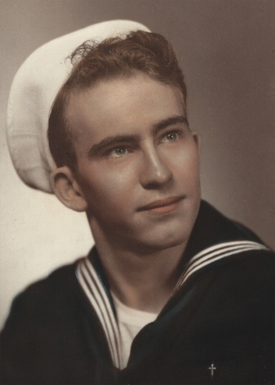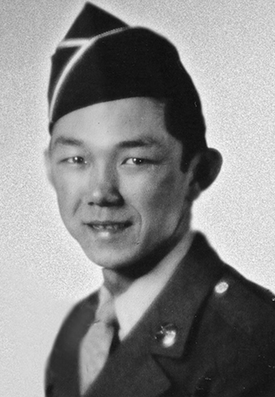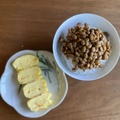“Why do you want to marry him?”
That is what my maternal grandfather asked my mother in the days leading up to her wedding.
It was genuine, blunt, honest. Even today, it was a question that my mother recalls as one that stunned her into momentary silence. After a pause and some thoughtful reflection, she was finally able to answer his query.
The matter was then put to rest, never to be spoken between the two again. Her father’s curiosity had been satiated.
This was the year 2001, and the occasion was the betrothal of a Caucasian woman and an Asian man. At the time, the nature of their union was nothing particularly new or unprecedented – Loving v. Virginia had solidified the legality of interracial marriages since 1967.
But for the soon-to-be-newly-weds, their marriage was still a peculiarity in the eyes of elder relatives. Relatives who grew up in near-total homogeneity. Relatives who, like my grandfather, couldn’t help but ask, “Why do you want to marry him?”
My maternal grandfather, Thomas, was born in Cleveland, Ohio in 1931. Although he hailed from English and German ancestry, he was undeniably American at heart. In the months following his graduation from high school, he enlisted in the U.S Navy, served as an Aviation Electronics Technician in the Korean War, and, eventually, returned home with an honorable discharge on file.
Despite a slew of medals under his belt, war was inevitably damaging. Squadron VF-12 was in charge of fueling, arming, repairing, maintaining, and flying the F2H-2 “Banshee” jet fighter. Comprised of 150 officers and men, the squadron was eventually classified as a high-performance attack and intercept unit. Of course, a unit entrusted with a task of this caliber meant seeing the horrors of the battleground up close and personal.
War remained an unapproachable subject for the rest of his life. With the exception of only a few facts and figures slipping past his lips, his time with the Navy was kept under lock and key even amongst his own family.
But work with airplanes did mean securing a job after his return home with Lockheed Martin: a company that he would remain with until his retirement in the mid-1990s. A move to Santa Clarita with his children soon became a part of the picture as well. Then (and still) a dominantly White suburban town, he continued to live much of his life amongst neighbors who talked, listened, and looked like him.
Thus, setting the scene for 2001: “Why do you want to marry him?”
And, in a Disney-like, fairytale fashion, my mother simply responded: “Because I love him.”
My parents married not too long after, with a fruit basket of friends and family joining to celebrate the newlyweds at their reception.
But as toasts were made and dancing ensued, the spotlight soon turned to a pair of elderly gentlemen: the first being my mother’s father, and the second being his company for the evening – my father’s father.
George, my paternal grandfather, was born in Auburn, Washington in 1921 to Issei parents, Fumi and Unosuke Karatsu. Although he began his adult life as a proud biology student at Los Angeles City College, the volatile combination of World War II, Executive Order 9066, and his Japanese ancestry meant the disruption of his academic endeavors in the name of internment.
In 1942, the Karatsu family was sent to Camp Amache in rural Granada, Colorado.
Like many young Nisei men his age, he eventually joined the war effort in 1944 as a draftee. With the G Company in the 442nd Infantry Regiment, he was first tasked with transporting soldiers killed in action and assisting the wounded before serving as a messenger and 1st sergeant. His fight on the French and Italian lines came to a crashing halt, however. After his younger brother was killed in action, he was discharged and promptly sent back home.
Employment with the United States Post Office kept him in work for more than thirty years while volunteering with his wife Mary at the Japanese American National Museum gave him an outlet to connect with friends, new and old. Still, the return to civilian life was no easy feat. All too much like my mother’s father, he spoke very little of the war.
But there is the saying that birds of a feather flock together. Undoubtedly, that was the case for my grandfathers in 2001.
“Animated,” is a word that I have heard to describe the pair at the reception over and over again. Even ridden with the aftermath of a stroke, Grandpa George adopted a newfound liveliness. One that was enough to beg the question, “Who’s that man he’s talking with?”
“That’s my father,” my mother responded simply.
In search of some sort of understanding of the man he met, Grandpa Thomas would later go on to visit the Japanese American National Museum in the months following the wedding. I can only imagine how he roamed the halls, meticulously studying the history of his new son-in-law and his family. A modest man, he did not crow about his strides towards understanding Japanese American experiences. In fact, a word of his visit would not reach my mother’s ears until years after.
Grandpa George would eventually pass only a short year later after the wedding, just a few weeks after I was born. Grandpa Thomas soon followed, passing in 2006 at age 74.
But for two veterans born in near-opposite sides of the country from near-opposite families, it was something akin to fate that they were buried in adjacent cemeteries in Inglewood and Culver City, only separated by a mere four miles.
I guess sometimes the universe is funny like that.
*This article was originally published in the Rafu Shimpo on February 26, 2022.
© 2022 Kyra Karatsu / Rafu Shimpo









